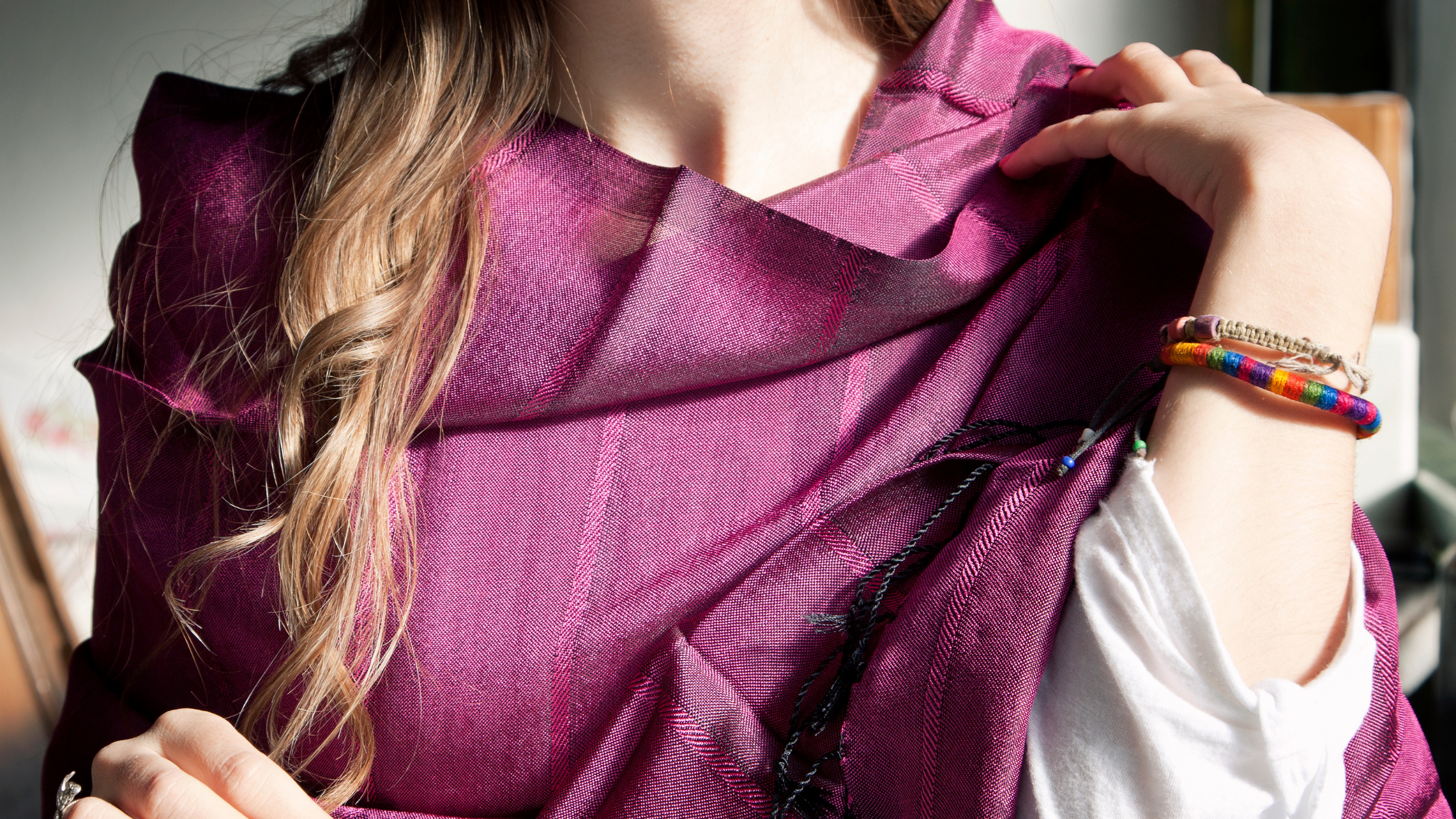Care Guide for Shawls: How To Wash and Store
February 25, 2023
Shawls are a beautiful and versatile accessory that can add style and warmth to any outfit. However, improper care and maintenance can cause shawls to become damaged, stained, or even shrink, compromising their appearance and functionality. To ensure that your shawls remain in excellent condition, it's important to know how to wash and store them properly. In this care guide, we will provide you with essential tips on how to care for your shawls, including the do's and don'ts of washing and storage, so you can continue to enjoy their beauty and functionality for years to come.
WASH FREQUENCY
As needed
STORAGE METHOD
Fold, Hang
The Right Way To Wash Shawls
Washing Shawls in the Washer
- Check the care label for specific washing instructions. If the shawl is machine washable, sort it by color and fabric type.
- Pre-treat any stains by applying a small amount of detergent or stain remover directly to the affected area.
- Place the shawl in a mesh bag to prevent tangling and wear during the wash cycle. If you don't have a mesh bag, fold the shawl carefully and place it inside a pillowcase.
- Select a delicate cycle and use cold water to avoid damaging the fabric.
- Add a small amount of detergent according to the package instructions. Use a mild detergent for delicate fabrics.
- Start the wash cycle and wait until it's finished.
- Remove the shawl from the washer and reshape it if necessary.
- Hang the shawl to air dry. Avoid using the dryer as it can damage the fabric.
- Check the care label for specific washing instructions. If the shawl is handwash only, fill a sink or basin with cool water and add a small amount of detergent.
- Submerge the shawl in the water and gently scrub it with your hands to distribute the soap.
- Rinse the shawl thoroughly under running water to remove all the soap.
- Squeeze out the excess water gently. Do not wring the shawl as it can damage the fibers and cause it to lose shape.
- Reshape the shawl if necessary.
- Hang the shawl to air dry. Avoid using the dryer as it can damage the fabric.
If the care label on your shawl says "Dry Clean Only," take it to a professional dry cleaner. Do not attempt to wash it at home as it may damage the fabric or color.
How Often To Wash Shawls
Shawls should be washed as needed, depending on how often they are used and how much they are exposed to dirt and sweat. If the shawl is made of delicate fabric such as silk or cashmere, it may require special care when washing. It is important to follow the care instructions to avoid damage. If the shawl has decorative elements such as fringe or beading, it is important to handle it with care when washing.

The Right Way To Store Shawls
How to Fold Shawls
- Find a flat surface to work on, such as a table or bed.
- Lay the shawl flat, smoothing out any wrinkles or creases.
- Fold the shawl in half lengthwise, matching the two shortest edges together.
- Fold the shawl in half again, matching the two longest edges together.
- Smooth out any wrinkles or creases.
How to Hang Shawls
- Choose a hanger that is wide enough to accommodate the shawl without causing it to bunch or sag.
- Drape the shawl over the hanger, making sure that it is centered and the edges are straight.
- Smooth out any wrinkles or creases.
Expert Advice for Maintaining The Quality Of Your Shawls
To keep shawls in top shape, it's important to follow the care label instructions carefully. Beyond that, there are a few practical tips that can help. First, avoid washing shawls with heavy or abrasive materials that can damage the fabric. Instead, sort shawls by color and fabric type, and use a mesh bag to prevent tangling and wear during the wash cycle. For handwashing, use cool water and a small amount of detergent, gently scrubbing and squeezing out excess water without wringing the shawl. Additionally, invest in a proper drying rack to air dry shawls and avoid using the dryer whenever possible, as it can damage the fabric. Finally, be sure to handle shawls with care, especially those with decorative elements, and consider using salt as a mordant or dye-fixer for new shawls to prevent color bleeding. By following these tips and treating shawls with care, you can help keep them in top shape for years to come.
DISCLAIMER
Just a friendly reminder that this care guide for shawls only provides general advice. Your shawls may have specific care requirements based on its material, style, and manufacturer instructions, so always check the care label before washing or storing it. If you're unsure about anything, it's always best to consult a professional cleaner. Please note that the author of this guide is not responsible for any damages or losses resulting from the use or misuse of any information from this blog.
Want to share this?
